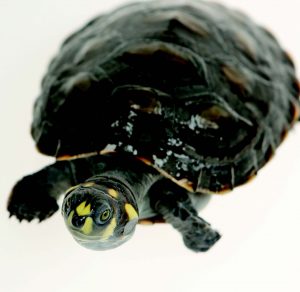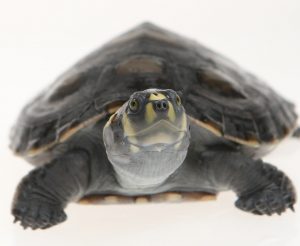A native of the Amazon River in South America, the yellow-spotted river turtle is one of several side-necked turtles. That is, instead of pulling its head back into its shell, this species bends its neck sideways to tuck its head under the shell’s rim. This is a large species, growing from 35 to 70 cm and has a lifespan of 60 to 70 years. Animal Scene interviewed Melvin So, a fancier who has spent years studying the yellow-spotted river turtles, for more information on the species.
AS: Can you give us a basic introduction to the yellow-spotted river turtle and how it came to be in the Philippines?
MS: This species is also known as yellow-spotted Amazon river turtle or yellow-spotted river turtle, scientific name Podocnemis unifilis. They are one of the largest species in South America. Males are smaller, while females can be twice as big compared to the males. In the early 90s, people began smuggling them in and selling them as pets. This species is quite hardy and easy to keep in captivity.
AS: How big can you expect it to grow, how long is its lifespan, what is its diet, and what other basics should those interested in it know?
MS: Females can grow up to 70 centimeters (cm) and males up to 35 cm. The average lifespan of this species range from 60 to 70 years.
AS: What for you are the defining characteristics of the yellow-spotted river turtle, the thing or things that make them special and/or distinguishes them from other, similar turtles?
MS: They have domed and dark-colored shells. Hatchlings have yellowish markings on their heads, but they shrink as they grow. Adult males do sometimes retain yellow spots on their heads, but adult females will lose their spots.
AS: Was it difficult for you to raise a yellow-spotted river turtle? What are the best things you’ve learned about keeping it, in your experience? What challenges did you face in its care, and how did you overcome these?
MS: No, it’s relatively easy. I just make sure the water condition is good. I siphon 10 to 20% of water every day and make sure my aquarium filters are clean. I also make sure they don’t get overcrowded in the tank. I provide a dock for them—this is a dry area fitted with a heat lamp, so they can climb up here to bask. I also provide a UVB bulb to help them get Vitamin D3 to stay healthy.
Honestly, the problem I faced with this species is they grow so fast. I need to have enough tanks for them so they won’t get crowded and make sure they get enough food.
AS: Do their care requirements vary from those of other turtles? Do they need a lot of attention? Do they need a special diet? What do they eat? What kind of exercise do they require? Will they need a special habitat?
MS: They are really easy to keep. Make sure you have a variety of food for them: fruits, vegetables, insects, and turtle pellets that are readily available on the market. You can also offer a variety of food for this species. These include insects like mealworms, superworms, and roaches.
AS: What are the characteristics of a healthy yellow-spotted river turtle? Conversely, what signs should keepers look out for that indicate when it is sick? What are its common health problems that keepers should watch out for?
MS: A healthy turtle has clear eyes, a smooth, shiny shell that has no visible signs of damage. It can walk, run, swim, or climb any obstacle without any problem. One common health problem for turtles is swollen eyes. Also watch out for gaping wounds or small rashes on the skin, holes on the shell, sneezing, and shell shedding.
AS: For someone who is interested in keeping a yellow-spotted river turtle for a pet, can you give them things to consider before taking the plunge? How much of a commitment do they require? Who would they make ideal pets for? Or are they better suited to aficionados who want to study them?
MS: Keeping this species is relatively easy, but you need to consider how they will be in 10 years from the time of purchase. They could grow quite big, and you will need a big tank or pond for them. But in general, they’re still considered low-maintenance pets. You could feed them once a day, or if you decide to go out town for a while, they can survive for weeks without food.
AS: How does the yellow-spotted river turtle interact with humans? Can they show affection the way traditional pets do, or do they express themselves another way?
MS: Turtles are smart. They have good eyesight and an excellent sense of smell. I noticed that captive-bred turtles are much friendlier as they have never feared us. They learn very fast who feeds them. Some will allow people to touch and pet them, but most of them won’t. Every individual has its own unique character.
MS: I prefer to keep small turtles indoors, since they’re still babies and are fragile. For bigger specimens, I prefer to keep them outdoors so they would get enough sunlight. UV rays are important to your turtles; make sure they get enough sunlight or provide a UVB bulb for them to get enough Vitamin D3. As they mature, make sure to keep the males separated. Male turtles are known to fight amongst themselves. Keep just one male with the females or keep only females together.
This appeared in Animal Scene magazine’s September 2017 issue.






